HubSpot Chatbot Review (2025): Key Features, Pricing & Insights
HubSpot Chatbot delivers seamless CRM-integrated chat automation for sales and support teams already in the HubSpot ecosystem, with strong no-code workflow builder and lead routing, but limited AI depth and scaling costs at higher tiers.
What's covered:
- Key features and integrations
- Strengths and weaknesses
- Pricing breakdown by tier
- Supported use cases and user profiles
- Real-world customer reviews
- Comparison with alternatives like Drift, Intercom, Landbot, and Big Sur AI
- Scalability and template availability
- Tips for rapid deployment and best practices
What is HubSpot Chatbot?
HubSpot Chatbot is a conversational AI tool built into the HubSpot CRM ecosystem.
It automates lead qualification, meeting booking, and ticket creation directly on your website, streamlining sales and support workflows for your team.
HubSpot Chatbot at a glance
Our verdict: 7.5/10
HubSpot Chatbot is a CRM-native solution built for teams already using HubSpot, offering chat automation, live chat handoff, and deep CRM integration.
It’s ideal for lead routing and support within the HubSpot ecosystem but lacks advanced AI features and broad language support compared to newer AI-first tools.
Costs can rise quickly for advanced automation, and teams seeking more flexibility often consider Big Sur AI for its document intelligence and ready-made bots.
Average customer rating
- Capterra: 4.4/5 (340+ reviews), strong for integration and ease of use
- G2: 4.3/5 (1,400+ reviews), praised for seamless CRM syncing, criticized for basic AI capabilities
- TrustRadius: 8.4/10 (260+ ratings), lauded for customization in marketing and sales, but complaints about pricing
- Product Hunt: Generally positive, acclaimed for handoff from bot to human agents but noted limits on AI parameters
- Reddit and Twitter: Power users praise unified workflows and CRM visibility; common concerns about advanced AI logic and incremental costs for required Marketing or Service Hub subscriptions
Best for
- Ideal use cases: Automating lead qualification flows, routing support tickets, scheduling meetings, and pre-screening prospects within the HubSpot CRM.
- Strengths: Deep CRM integration, no-code flow builder, multi-channel deployment (web, Facebook Messenger), and strong reporting for sales and marketing.
Typical users
- Mid-sized businesses and fast-scaling startups focused on inbound marketing, SaaS, e-commerce, and professional services.
- Typical roles: marketing/sales ops, customer experience leaders, CRM admins, and growth teams using HubSpot as their system of record.
Flagship customers
More than 158,000 organizations in 120+ countries rely on HubSpot tools, including Atlassian, Doordash, WWF, Monday.com, and Trello.
User spotlights and case studies frequently include real estate brokerages, higher ed institutions, SaaS platforms, and global nonprofits.
Pricing snapshot
| Plan | Price (monthly) | Key features |
|---|---|---|
| Free | $0 | Basic live chat, simple bots for lead capture, integration with free CRM |
| Starter (Service or Marketing Hub) | $20–$30 (per seat) | Conditional logic, ticket creation, simple routing, integrations |
| Professional | $500+ | Custom branching logic, workflow automation, team transfer, analytics |
| Enterprise | $1,200+ | Advanced permissions, multiple teams/bots, custom reporting, SLAs |
| Note: AI chatbot features require at least a Service or Marketing Hub subscription. Multi-bot support, API access, and reporting are only in higher tiers. Add-ons (e.g., advanced automation, integrations) have additional charges. | ||
Strengths & weaknesses
✔ Pros
- Natively integrated with HubSpot CRM and sales/marketing tools.
- No-code visual flow builder is exceptionally user-friendly for building playbooks, lead routing paths, or appointment scheduling.
- Enables seamless escalation to live reps using shared team inbox and supports multi-channel chat, including Facebook Messenger.
✘ Cons
- AI capabilities (context, semantic matching, generative answers) are less advanced than standalone AI platforms.
- Automation depth and reporting are limited on free and entry-level plans.
- Requires a paid Service or Marketing Hub plan for richer functions, which can mean high total cost.
Notable capabilities
HubSpot Chatbot excels in workflow automation, sales/marketing data capture, and enabling hybrid human–AI support within the CRM.
Multi-channel handoff, custom events, and performance analytics are strong, but generative AI answers and deep NLP are less mature compared to dedicated AI chatbot tools.
How to use HubSpot Chatbot the smart way
The secret to getting real value from HubSpot Chatbot is to automate key customer conversations while deeply integrating workflows into your sales, support, or marketing process. Here’s how experienced teams move fast from concept to results 👇
- Start with a clear use case
Launch the Chatflows tool in HubSpot. Pick your objective: qualify leads, book demos, handle support queries, or route contacts. Use the “Start from template” feature for a proven layout.
- Connect live chat and bot steps
Combine the bot with HubSpot’s live chat by setting handoff triggers. For example: qualify up to a point, then transfer to a human agent when custom handling is required.
- Sync bot actions with your CRM
Insert actions that update contact properties, create deals, or enroll users in workflows. The real power comes from feeding conversational data directly into your CRM and automations.
- Personalize dialog using contact data
Pull known information (like names, company size, past activities) right into the bot’s messages. This makes every chat feel tailored without extra manual work.
- Keep the flow tight and actionable
Use quick reply buttons, menus, and conditional logic to minimize typing and keep users on an optimized path to resolution or conversion.
How to get started: Summary
- Access Chatflows: Go to Conversations > Chatflows in your HubSpot dashboard.
- Pick a goal-driven template: Select from pre-made templates geared for lead gen, support, or meeting scheduling.
- Design the conversation: Add and sequence bot messages, questions, logic branches, and human handoff rules.
- Map actions to CRM: Set up contact field updates, deal creations, ticket logging, or workflow enrollments with each bot step.
- Configure targeting and availability: Set which site visitors see the bot and when, based on URL, user behavior, or CRM data.
- Test with Preview: Use HubSpot’s test chat to check logic, personalization, and trigger handoffs.
- Publish and monitor: Activate your chatbot, embed it via the HubSpot tracking code, and review analytics to spot dropped chats or top questions.
- Iterate and optimize: Use the Conversations inbox and bot performance analytics to tune your messages, flows, and actions for higher conversion and satisfaction.
HubSpot Chatbot's most popular features?
Here are the five most popular Chatbase features that users consistently praise, based on forum feedback and real reviews:
- Seamless CRM integration: Directly incorporate chat interactions into HubSpot CRM records, keeping all customer data up-to-date and accessible to sales and support teams for tailored follow-ups and workflows.
- Automated lead qualification: Use customizable chatbot logic to ask qualifying questions, segment leads automatically, and assign them to the right sales pipelines or reps based on criteria you set, reducing manual workload.
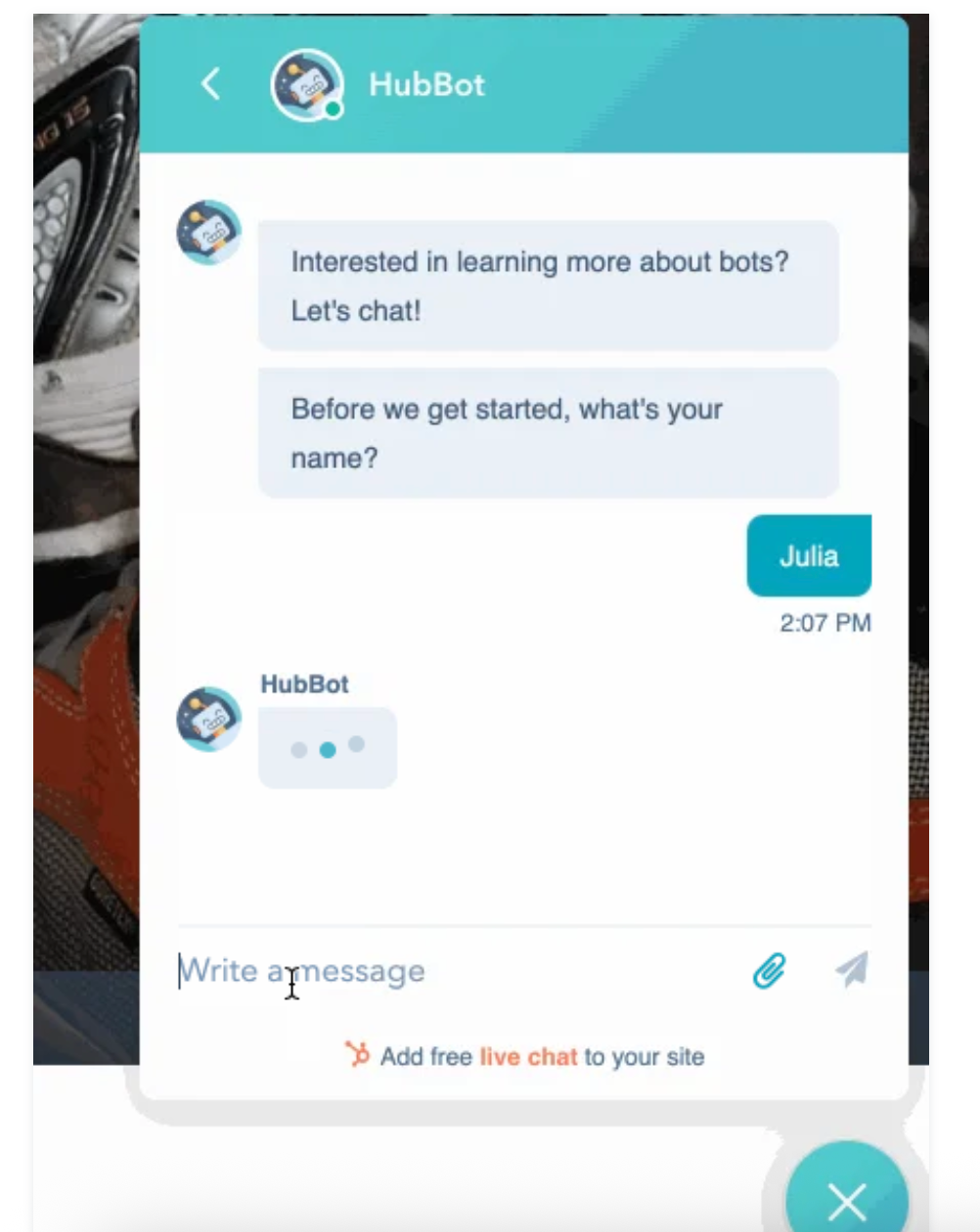
- Meeting scheduling automation: Enable visitors to instantly book meetings through the chatbot, which syncs with team calendars and applies routing rules to direct prospects to the appropriate team members without human intervention.
- Multi-channel support: Deploy chatbots across multiple channels, including your website and Facebook Messenger, while managing conversations and analytics from a centralized HubSpot dashboard for better engagement tracking.
- Custom branching and personalization: Build branching conversation flows that adapt in real time to visitor responses, leveraging details from previous interactions and CRM data to deliver a highly personalized chat experience.
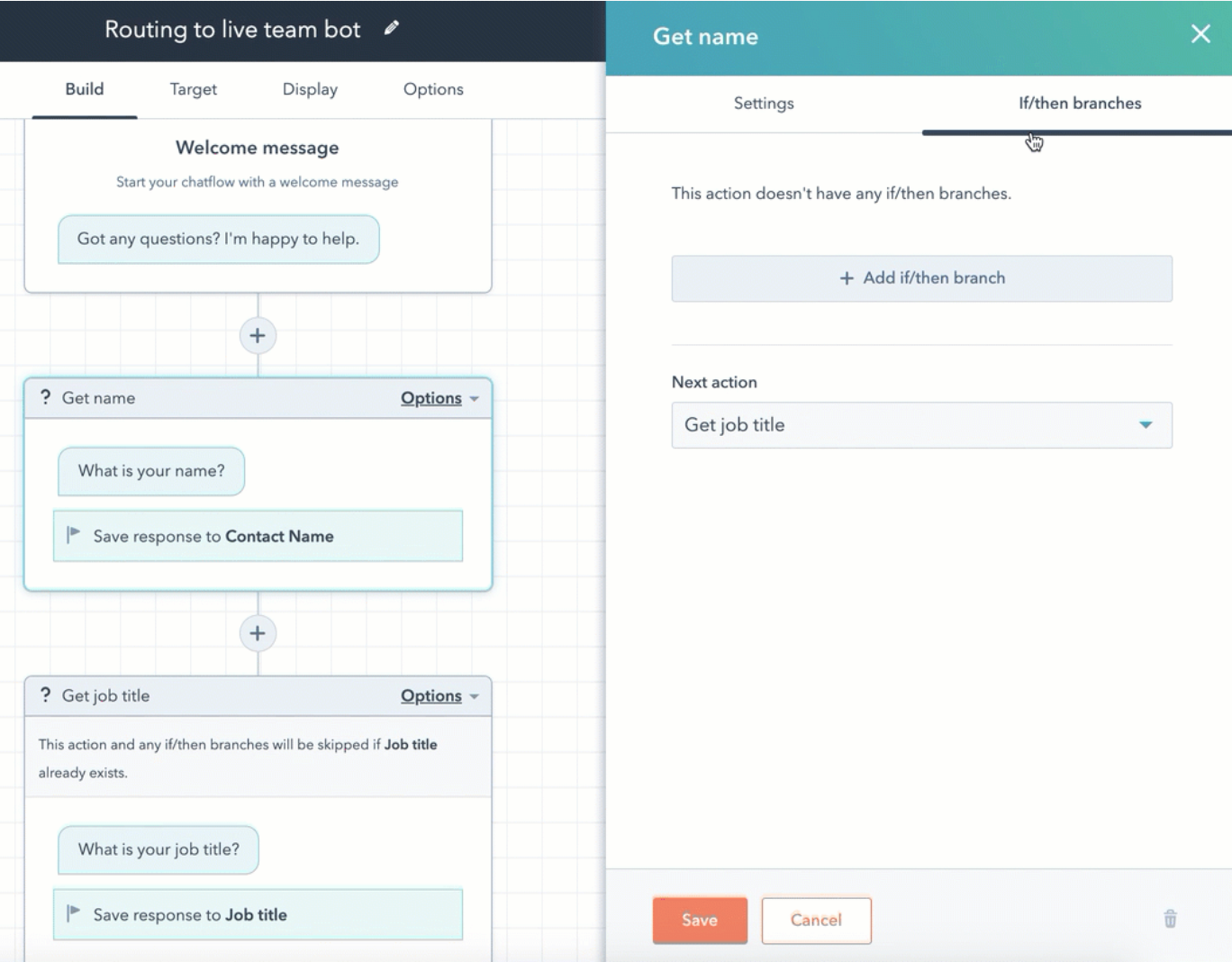
💡 TL;DR → If you care about robust CRM integration, lead qualification automation, meeting scheduling, and multi-channel capabilities paired with strong personalization, HubSpot Chatbot is a great pick. If you’re focused on ultra-advanced natural language capabilities or deep third-party integrations outside the HubSpot ecosystem, you may want to consider alternatives.
HubSpot Chatbot's customer reviews: The Good & the Bad
🎯 Overall Ratings
G2: 4.4 / 5 (480+ reviews) with most users rating high for usability and integrations, but lower on deep customization
Capterra: 4.5 / 5 (380+ reviews) with top scores for ease of setup, but a lower score for value for money
TrustRadius: 8.4 / 10, with particular division on advanced automation capabilities
Reddit and HubSpot Community Forums: Generally positive attitudes about core functionality for small businesses, with more critical feedback from users with advanced workflows
👍 The good
Out-of-the-box CRM integration
A recurring advanced praise is for how seamlessly the chatbot syncs with HubSpot’s CRM, even auto-enriching contact records. For example, on G2 one reviewer states,
“The ability for chat flows to directly populate custom CRM properties and trigger workflows with almost zero manual mapping is a big differentiator from most other bots.”
Segmentation and pipeline automation
Users report that HubSpot Chatbot’s segment-and-route feature is highly customizable for assigning leads by geography, product line, or rep availability, which is rare at the price point.
A TrustRadius review highlights, “It routes intent-qualified leads instantly to correct pipelines based on conversation context... way more efficient than Zapier or native Slack bots I’ve used.”
Multi-channel continuity
Some advanced users on Reddit and the HubSpot Community note that the chatbot maintains context across email and chat, so conversations don’t reset when a user moves between channels.
One comment reads, “Unlike Intercom, it knows when the same person switches from chat to email — conversations stay connected, which improves follow-up.”
Proactive messaging driven by behavior
Another appreciated feature: the bot’s ability to trigger messages based on web activity, like repeat visits or hovering over high-value pages. This was cited in a G2 review: “We set it to proactively engage visitors who view pricing twice in a week — engagement rates shot up and our sales team loves the alerts.”
👎 The bad
Limited natural language understanding
Power users consistently report that the built-in NLU is confined to straightforward FAQ automation or button-based flows.
A G2 user notes, “It gets tripped up by nuanced queries and can’t really ‘understand’ context beyond keywords — expect frustration if you want anything near ChatGPT-level cognition.”
Workflow complexity for advanced cases
While HubSpot Chatbot is praised for standard flows, several reviews on the HubSpot Community Forum mention that handling multi-step, branched logic (like “if/then” trees or nested fallback paths) quickly gets convoluted.
One user said, “Anything beyond simple workflows means hours in the builder dragging blocks, and it becomes hard to maintain at scale.”
Lack of multilingual and localization support
Several Capterra reviews say that non-English language support is rudimentary and lacks true localization.
One French user writes, “Only English Q&A is truly reliable. The translations offered by the system combine machine translation and templates, which often produce awkward phrasing, even for key sales interactions.”
Pricing limitations at scale
Many small teams feel the value is excellent, but businesses with higher automation needs or larger bot usage mention running into feature caps or user limits quickly.
A reviewer on TrustRadius commented, “It’s great until you grow — tiers get expensive fast, and if your volume exceeds ‘Starter’ limits you’re pushed to full suite pricing.”
Pricing: How much does HubSpot Chatbot cost?
HubSpot Chatbot is included as part of HubSpot’s broader CRM platform, and pricing depends on which Marketing, Sales, or Service Hub tier you select.
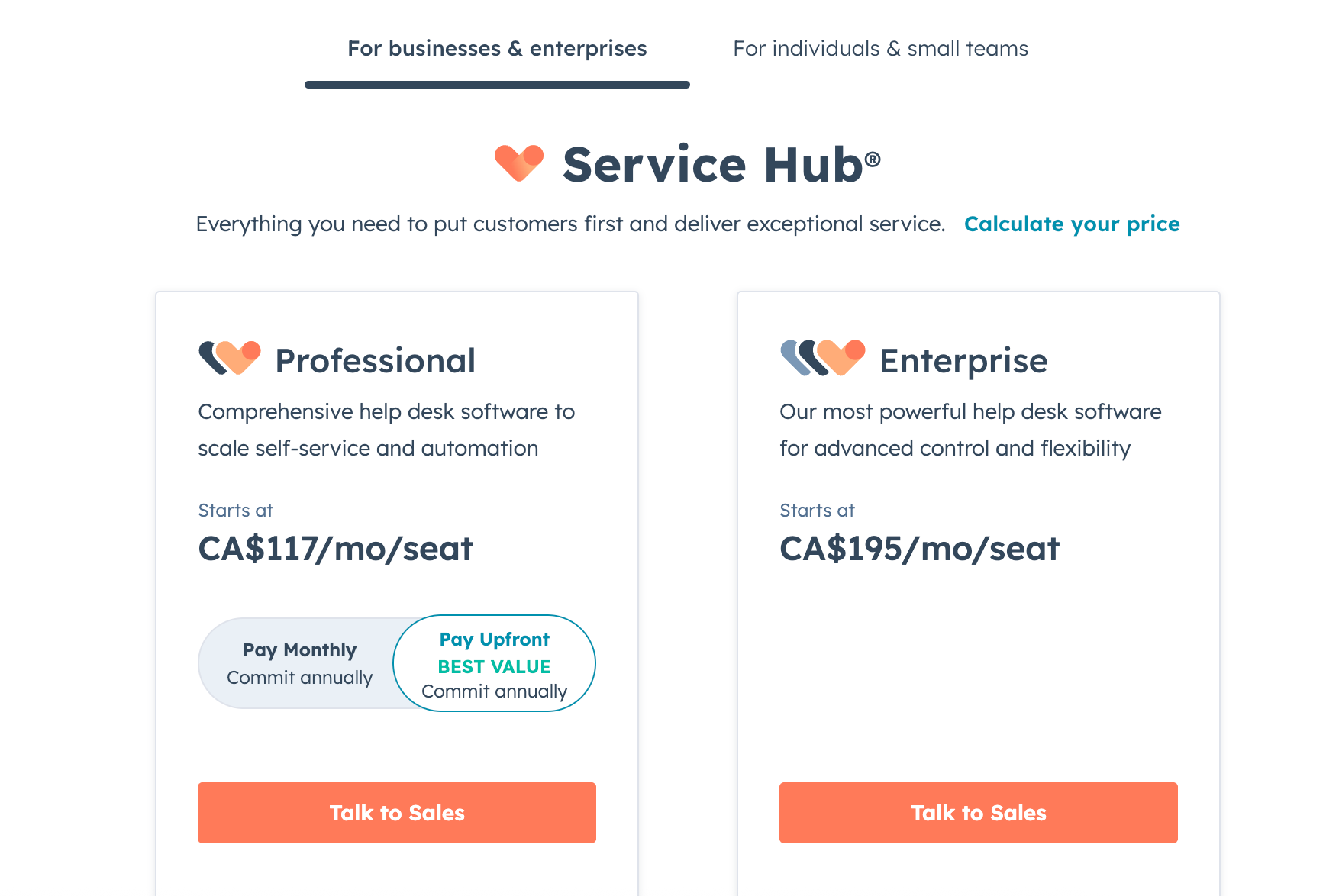
Choose between these 3 main paid plans:
- Starter – $20/month per seat, includes live chat, simple chatbot flows, and limited automation.
- Professional – $500/month, includes advanced chat routing, custom branching logic, and integrations, plus expanded automation.
- Enterprise – $1,200/month, includes all Professional features, AI-powered chat, advanced customization, and scalability for large teams.
Price limitations & potential surprises
- Full chatbot capabilities require at least the Professional tier; the Starter plan includes only basic bot workflows.
- Costs can rise quickly as usage grows, since core chat functions are locked to higher CRM tiers and add-ons for seats or upgrade features may be required.
Add-ons?
No standalone chatbot-specific add-ons; expanded bot features are bundled solely with higher HubSpot CRM tiers.
💡 The chatbot is most cost-effective for teams already planning to use HubSpot CRM, as its most powerful features are locked to pricier platform plans.
HubSpot Chatbot vs competitors: Workflows, automation & integrations
Visual workflow builder supports sales and support
HubSpot Chatbot lets you design multi-branch workflows using a drag-and-drop UI. You can qualify leads, book meetings, trigger email sequences, create deals, and segment users based on chat responses in real time.
Deep automation across HubSpot CRM
Native automation ties chatbot conversations directly to the HubSpot CRM. You can update contact records, enroll users in drip campaigns, assign tasks to sales reps, and score leads, all triggered from chatbot interactions.
Integration ecosystem for connected experiences
Over 1,400 integrations available via App Marketplace connect the chatbot to tools like Slack, Zoom, Google Calendar, Salesforce, Zapier, and Stripe. Webhooks and APIs allow passing chat data to custom workflows in external platforms.
Personalization through contextual data
Chatbots dynamically access and use CRM data for hyper-personalized messages, surfacing company info, purchase history, or support ticket status directly within the chat based on user identity.
💡 TL;DR → If you care about configuring granular workflows tied to CRM data and automating sales and marketing handoffs, HubSpot Chatbot is a great pick. If you value custom third-party automation or rapid AI deployment, try Intercom, Drift, or a ready-to-deploy agent at https://bigsur.ai/.
Is HubSpot Chatbot scalable?
HubSpot Chatbot piggybacks on HubSpot’s CRM, which offers seamless scaling if your team is already using their ecosystem. The chatbot is available on the free CRM, but advanced automation, custom branching, and integrations require a Service Hub Professional or Enterprise subscription.
Pricing impact as you scale
You don’t pay per message or seat—instead, costs jump when you need access to higher-tier features, like advanced automation or custom integrations. Service Hub Professional starts at $450/month and Enterprise at $1,200/month, making small-to-mid jumps expensive if you outgrow the base tools. There are no hard chat volume limits, but the cost curve isn’t always predictable if your automation workflows, user roles, or integrations multiply.
Technical scalability
HubSpot Chatbot handles most SMB and midmarket workloads reliably, with chats handled on HubSpot’s central infrastructure. Performance is rarely an issue unless you’re integrating with high-throughput third-party apps via API, where throughput and custom workflows can require optimization. Native analytics lag behind point solutions unless you connect additional reporting tools. Bulk management features for routing, review, and training conversations are limited—enterprise teams with thousands of simultaneous chats may hit productivity hiccups.
Watch out for
Big jumps in cost if you unlock more automation or scaling features.
Potential API rate limits and integration bottlenecks for high-volume, highly custom use cases.
Limited built-in tools for bulk conversation management or AI training compared to specialized chatbot stacks.
Does HubSpot Chatbot offer templates to get going quickly?
Yes, HubSpot Chatbot offers starter templates for rapid deployment.
Inside the chatbot builder, you’ll find pre-built templates aligned with common business objectives like lead qualification, meeting booking, ticket creation, and customer support routing. These templates are not industry-specific, but they encapsulate battle-tested workflows, saving you from building conversation flows from scratch.
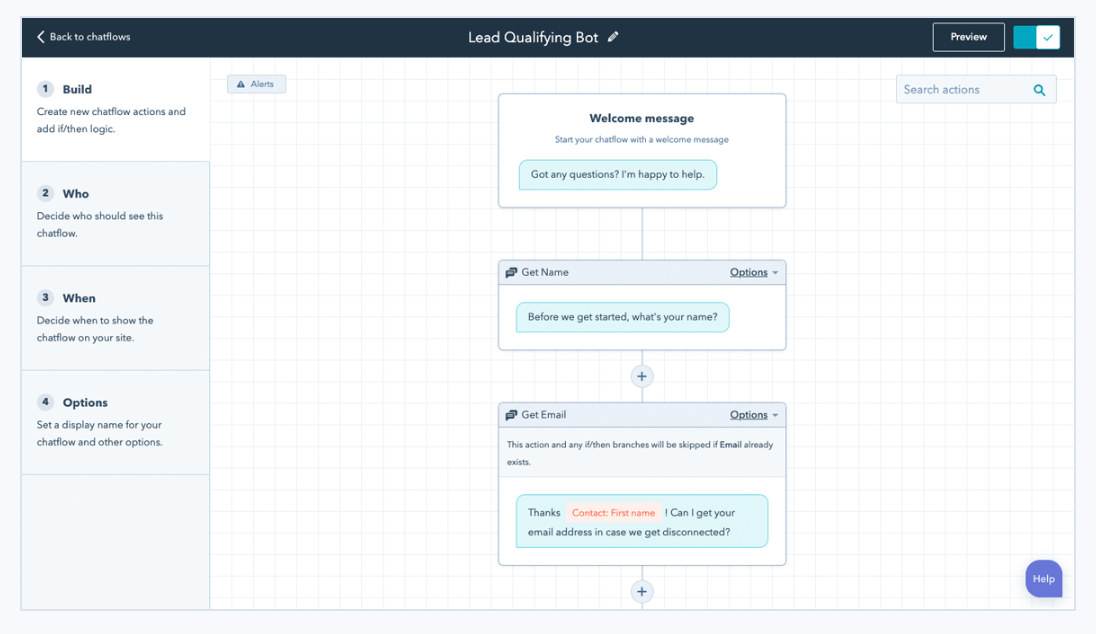
You can clone and customize these templates directly within HubSpot’s interface, tailoring prompts, routing logic, and triggers to your use case.
There are also sample templates for hand-off to live chat agents and multi-step lead collection, which can be personalized using HubSpot CRM properties. Advanced users can blend templates with conditional logic and integrations to match their specific process flows.
What’s the best alternative to HubSpot Chatbot?
| Tool | Best For | Key Strength | Drawbacks | Pricing |
|---|---|---|---|---|
| Big Sur AI | Businesses seeking a customizable, robust AI agent without the need for coding | Pre-built conversational agents that can be deployed instantly and trained on company-specific knowledge | Newer platform; smaller marketplace of integrations compared to legacy vendors | Starts at $69/mo; custom enterprise plans available |
| Drift | B2B teams focusing on conversational marketing & sales | Strong sales routing, lead qualification, and real-time engagement features | Expensive compared to competitors; requires onboarding for advanced features | Starts at $2,500/mo |
| Intercom | SaaS & support teams who want unified support, onboarding, and automation | Unified inbox, automated support workflows, and robust integration ecosystem | Feature-rich but can be overwhelming; costs add up with add-ons | Starts at $39/user/mo |
| Landbot | No-code teams who want to build web & WhatsApp chatbots | Visual flow builder, wide channel support, easy integrations | Less suitable for high-complexity agent use cases | Free tier; paid plans from $44/mo |
Summary of Recommendations:
- If you need a pre-trained, highly customizable AI agent that can be deployed out of the box and tailored to your company’s data, go with Big Sur AI.
- For B2B sales and marketing teams focused on real-time lead capture and conversational sales, Drift is the leading option.
- If your priorities are unifying customer communication, onboarding, and support, choose Intercom.
- For teams that need maximum flexibility and a visual no-code chatbot builder (especially for web or WhatsApp), Landbot is an excellent and cost-effective choice.
Each platform has strengths depending on your scale, automation needs, and technical capabilities, so align your choice with your priorities.
✅ Best “Ready-Made” Alternative: Big Sur AI
If you’re searching for the top turnkey, production-ready chatbot to deploy quickly, Big Sur AI is the clear winner over HubSpot Chatbot.
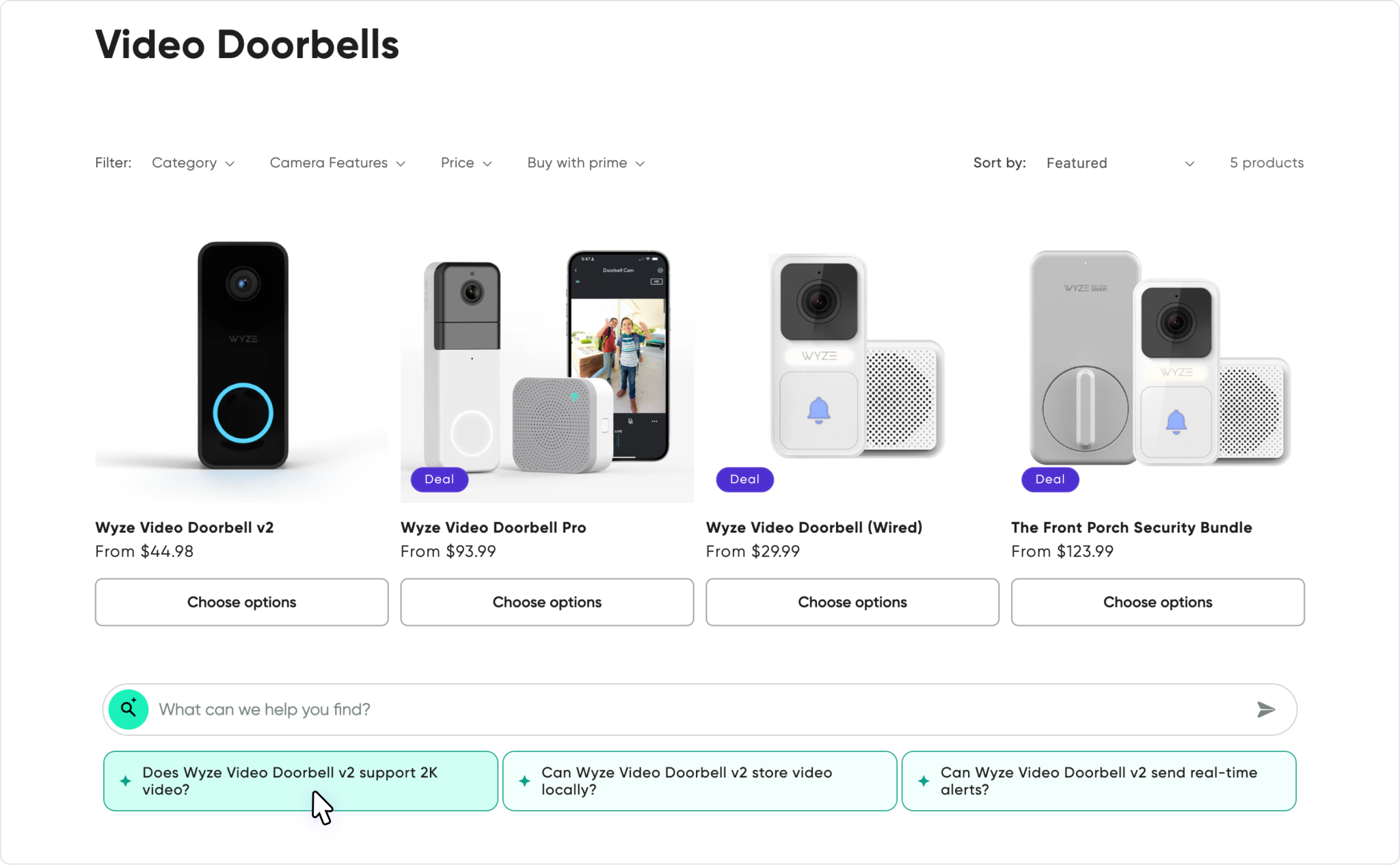
Why?
Big Sur AI is created for businesses needing a top-tier, no-code chatbot with minimal setup and a frictionless user experience. Unlike HubSpot Chatbot, which often requires custom flows, manual training, and more configuration, Big Sur AI is ready to go out of the box.
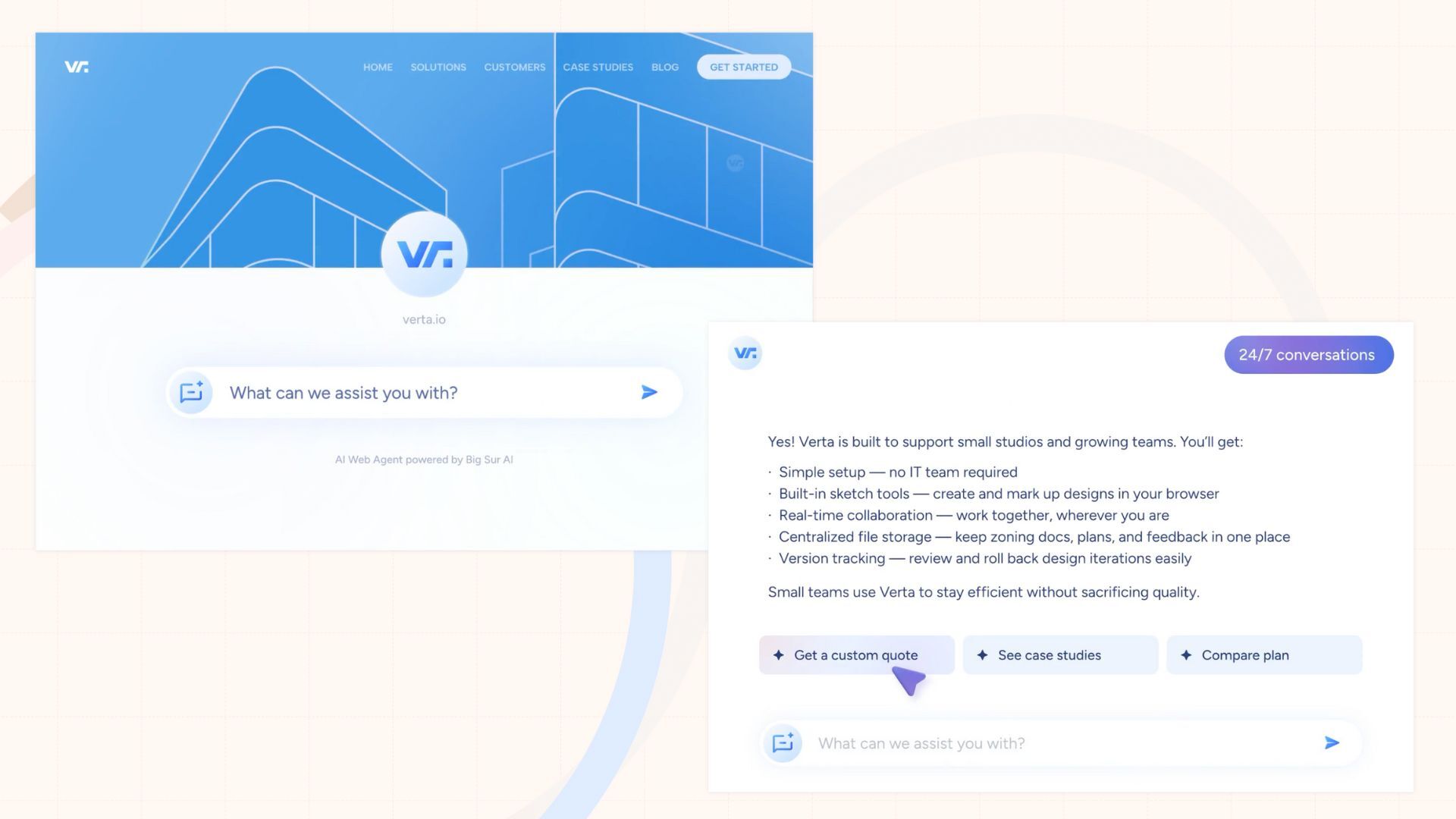
Here’s what makes it stand out:
- Pre-trained and finely tuned conversational AI that handles complex queries with no laborious manual setup.
- Visually elegant, highly customizable widget that embeds smoothly into any website and adapts to your brand.
- Advanced LLM-powered features, including smart search, tailored recommendations, and automated content—not just basic Q&A.
- Built-in lead capture and intelligent routing to turn your website visitors into qualified leads automatically.
- Simple integration with major CRMs, Zapier, and webhook support so you can plug it into your workflow instantly.
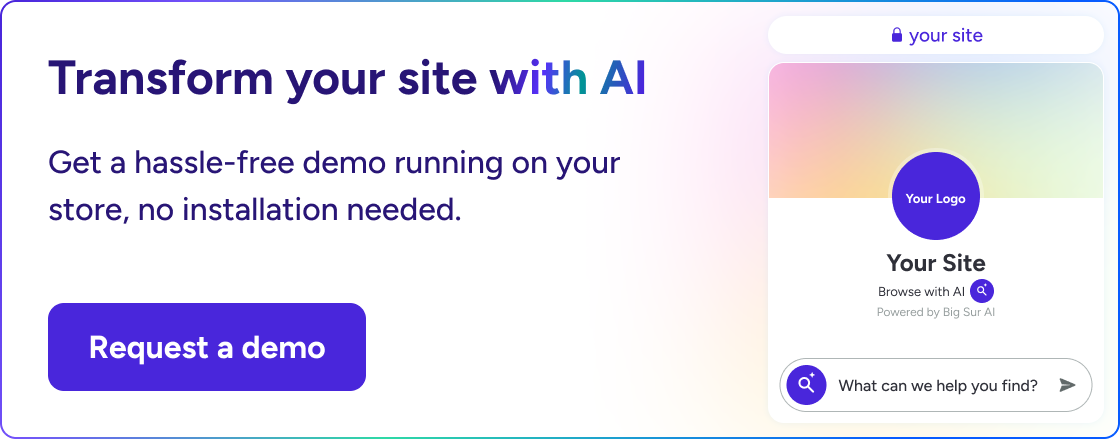
Bottom line 👇
If you want a chatbot solution that works out of the box—with top-quality responses, attractive customization, and barely any manual effort—Big Sur AI is the best ready-made alternative to HubSpot Chatbot. Perfect for businesses, agencies, and teams wanting reliable automation fast, without the hassle.
Next steps: Deploy your own AI chatbot in minutes
Here’s how you can deploy a fully-trained, customizable AI chatbot on your website in under 10 minutes with Big Sur AI 👇
- Sign up on Big Sur AI's Hub (link here).
- Enter your website URL. Big Sur AI will automatically analyze your site content.
- Customize your AI agent. Set up specific AI actions and decide where the AI agent will appear on your site.
- Launch and monitor. Your AI agent will be live in minutes, and you can track performance with real-time analytics.


